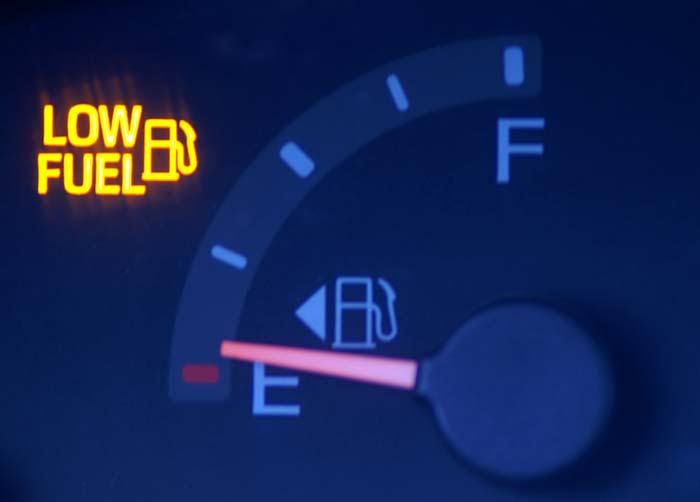I am a passionate teacher of advanced pain-management for massage therapists. I talk and preach inflammation day in and day out.
One of the first things I explain to a student taking my classes is how pain is only an indication of something not working correctly—not an automatic invitation to work on it.
The other thing I teach is that if you can effectively reduce pain, you can effectively reduce inflammation. It is rarely the other way around when you are using natural healing techniques on an inflamed body.
The reason for this is that many of the biological processes of inflammation are turned on by the pain signal and its sensation. If the pain signal goes down, those inflammation processes decrease as well. (You can read more about the inflammation process on this page of Southern Illinois University School of Medicine’s website.)
I know this concept might seem backwards—how are you supposed to get rid of pain in the low back if you don’t do some deep back work to release muscles, tendons, trigger points or fascial restrictions?
This is where I teach not what to do, but when to do the correct type of work for a client in the pain and inflammation cycle. If pain is a signal for inflammation to start, then you must limit how much pain you give someone in higher levels of inflammation, or you just feed the fire.
The Language of Inflammation
What is pain really trying to tell you?
When it begins, pain is usually an indication you are running out of energy. It’s kind of like the light that comes on in your car when you are running low on fuel. Pain tells you that you need to rest or refuel to keep going; it is nothing more than a red-light warning telling you that your body is running out of energy. The longer you try to ignore it, the more convincing and limiting it will become.
Think about the headache you get at 3:00 p.m. when you are hungry or tired. That headache pain is telling you that you need to rest or eat. Consider how your back will start to hurt after working in the yard for a couple of hours. This pain is telling you your body needs to rest and recharge to finish working, or it needs to stop for that day; it will continue to get more impressive until you do stop. It is there to protect you from injuring yourself.
There are different levels and types of pain, but general pain is basically just a signal. If you listen to and heed it, you stay more in line with health. If you ignore it, there can be consequences to many structures in the body.
There are two ways massage therapists can approach inflammation: directly and indirectly, and which way we choose depends on each client’s ability to heal.
The Clients Who Heal and the Clients Who Don’t
Let me explain this concept by creating a comparison between a hypothetical Client A and Client B.
Some clients’ bodies, like Client A’s, can heal from pain well through deeper work, stretching or trigger-point therapy. Then there are others, like Client B, in which that same treatment completely backfires, with the person having to go through days of pain and recovery after the treatment.
What is the difference? Why does the same treatment not work the same for both clients?
The answer is that Client B has more pain and inflammation. Because of those constant draining factors, people like Client B do not have the energy to help themselves heal.
This can present a difficult paradox for the therapist, as the client in more pain typically wants you to “work out those knots” so that he can feel better. Once we finish that deeper work, the client just feels worked over, yet believes he did something to help himself—which may or may not be true.
If a client has to recover from bodywork instead of feeling immediately better from that appointment, then whatever work was applied put her body into more pain and inflammation, and she did not have the energy to meet the new, additional demand created by the massage.
Assess Pain Levels
Prove this concept to yourself by trying this little trick in your practice: If you have a client scheduled who has a high level of pain and inflammation, ask him what his pain level is on a scale of one to 10 before and then after the session.
If your client comes in at a pain level of eight, and after the session she is still at a seven or eight, what does that tell you? That the treatment provided didn’t change her body. It may be what she wanted and asked for, but it didn’t offer pain reduction that facilitated the energy to help heal from inflammation. Many times clients may say they feel better, but their pain level is still high, which is an indication that inflammation is still a problem.
If your client comes in at a pain level of eight and after the session he is at a three, what does that tell you? That whatever treatment you offered actually gave energy back to the body by reducing pain and therefore inflammation. The energy to heal was offered and received. This process has a basis in Chinese medicine, which seeks to balance the body by shifting energy, or chi.
The important part is that pain decreased and energy demand went down, creating a surplus of energy to fight inflammation or to be given to the area in greatest need of healing.
Beyond Physical Pain
We all know pain is not just physical, but the body doesn’t. It will always respond to pain with inflammation, even if that pain is emotional or mental; that is how stress can be a silent killer. Research suggests that some mental pathways have pain responses to emotions identical to pain signals in tissue.
I believe the body knows what it needs to do, and that I do not have to tell it what to do. I just try to use my hands and skills to the best of my ability to create the space and energy for the body to heal itself.
Too often, therapeutic inflammation can be a dictator of energy, creating more demand than these worn-down bodies can supply.
The body will either fight pain or heal. It will not do both at the same time.
Work with, not Against, the Body
In my classes, we also talk about how you have to work within the body’s parameters to heal.
What I mean by this is that if your goal is to decrease pain and inflammation, it is not typically gained by increasing pain and inflammation.
There is a demand created by therapeutic inflammation—a demand for the energy and raw materials to heal an area. Direct application of massage to an area of muscular pain can go two ways:
- It will heal, pulling deeply on its resources, finding the energy to repair. The body goes through the amazing transformation of scar tissue through the completion of the inflammatory process.
- It will not heal. With no resources to pull from, the body escalates into more pain, depleting the body further. The body will force itself to rest due to exhaustion and pain. The rest will give some energy back to healing, but most times pain will increase after treatment, only to return to the same pain level as before treatment.
How to Create Lasting Change
The question you probably have now is one I get asked all the time: If someone is at a high level of pain and you don’t want to create more pain and inflammation, then what kind of bodywork do you apply that creates lasting change in pain and inflammation?
The answer: indirect applications, the techniques that seem to affect pain from a distance for what your client complains of.
I always tell my students to use the technique that works. That could be the Pain Patterns and Solutions techniques I teach, or it could mean several other tools in your massage toolbox. It all depends on how the client responds. The only way you will know which technique works is to check before-and-after pain levels. That is your undeniable proof.
When you decrease pain, you decrease inflammation. Then the body has more energy to heal itself. Watch for what takes pain from an eight to a four in that session, then from a seven to a three in the next session, then a six to a two, and so on.
Slow and Steady
It’s a dance as old as time—Mother Nature’s dance. It is two steps forward and one back; then two steps forward again and one back. The body responds best to slow and balanced steps toward regaining health.
That is the true essence of natural healing through decreasing pain and inflammation.
 About the Author
About the Author
Amy Bradley Radford, L.M.T., B.C.T.M.B., has been a massage therapist and educator for more than 20 years. She is the owner and developer of Pain Patterns and Solutions Seminars CE courses (ppsseminars.com). She has authored several books, including Defining Expectations. She wrote At the Table, Always Be Polite” for massagemag.com (June 1, 2016) and “Inflammation: The Significance of Energy Depletion” for MASSAGE Magazine’s December 2016 print issue.
Family of Brands










